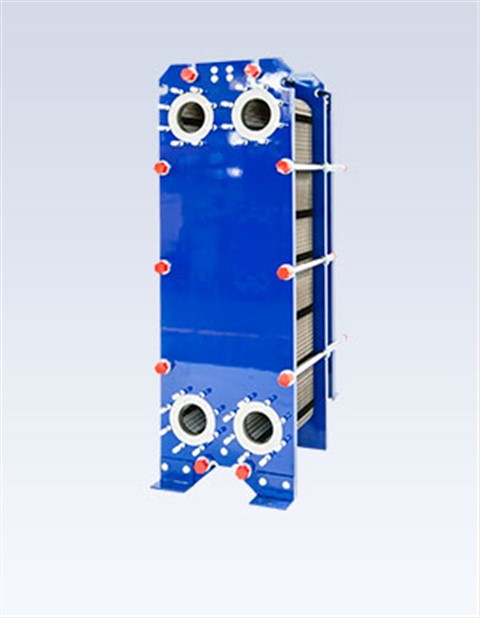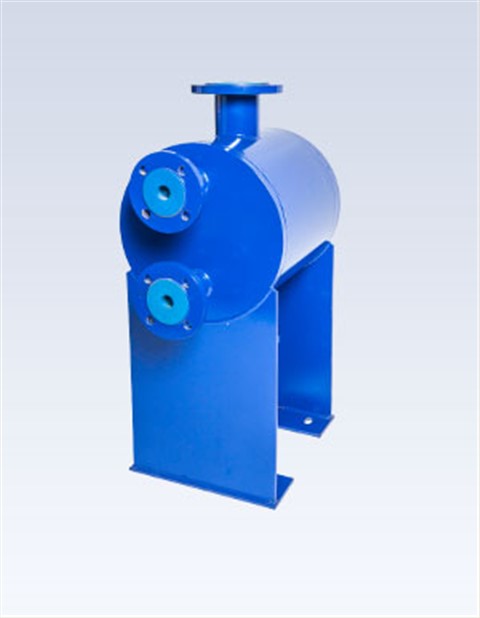The quality of the core parts of the plate heat exchanger plates and rubber gasket is related to the stability of the plate heat exchanger, and therefore to the stability of the entire manufacturing and application.
Depending on the medium used, the choice ofgasketmaterial for plate heat exchangers varies. Only by clarifying the applicable range of various rubbergasketmaterials can the correct heat exchanger be selected, thereby improving the heat exchange efficiency and production efficiency.
The following picture systematically shows the material and application range of the plate heat exchanger rubbergasket:
| material and characteristics | Main scope of application | Restricted scope |
| NBR | Temperature: -15 ~ 115 (short time 135) ° C | Sulfuric acid, nitric acid or strong oxidizing substances; acetone; light to moderate swelling in synthetic lubricants and ozone |
|
|
||
| polymer: an acrylonitrile-butadiene | medium: water and aqueous solution; fat; vegetable oil; mineral oil (chain hydrocarbon); refrigerant containing alkylbenzene; compressor lubricating oil containing cycloalkyl glycol ; Ethanol; Ethylene glycol | |
| vulcanised |
|
|
| HT NBR | Temperature: -15 ~ 140 (short time 150) ° C | Same as NBR |
|
|
|
|
| polymer: an acrylonitrile-butadiene special | medium: same as NBR | |
|
|
|
|
| peroxide curing |
|
|
| HYD NBR | Temperature: -15 ~ 160 (short time 165)? |
|
|
|
||
| polymer: same as HTNBR | Medium: Same as NBR | |
| water and aqueous solution; fat; vegetable oil; mineral oil; can also be used in some special working conditions such as crude oil and amine | ||
| hydrogenation treatment |
|
|
| EPDM | Temperature: -35 ~ 150 short time 160) ° C or | Fat: hydrocarbon |
|
|
-25 ~ 180? |
|
| Polymer: EPDM copolymer special |
|
solvent; liquid containing a small amount of mineral oil (such as compressor oil for refrigeration) |
|
|
medium: high temperature hot water and steam; various chemicals; alkali such as NaOH; weak acid |
|
| industrial with peroxides |
|
|
| RES EPDM | Temperature: -35 ~ 160 (short time 165)?; | Same as EPDM |
|
|
when the pressure is very low, can be specially made at -44?rubber | |
| polymer: EPDM copolymer |
|
|
|
|
medium: general high temperature chemicals and steam | |
| resin thinning |
|
|
| Food EPDM | Temperature: -35 ~ 145 (short time 150)?When the | Same as EPDM |
|
|
pressure is very low, the rubber | |
| polymer: EPDM copolymer |
|
|
|
|
medium specially made at -44?: enoic acid, alkali, steam and hot water; | |
| FDA grade, peroxide cured |
|
|
|
|
for adhesive strips, it can also be used for small amounts of animal fat fluid | |
| Chlorine-resistant EPDM rubber | Temperature: -35 ~ 145 (short time 150) ° C | Same as EPDM |
|
|
|
|
| polymer: special EPDM copolymer chlorine-resistant EPDM | medium: high temperature hot water and steam; various chemicals | |
| FPM | Temperature: -35 ~ 180 (short time 200) ° C | Same as EPDM |
|
|
medium: high concentration of inorganic acid (oxidizing acid, etc.); hot water and steam; high temperature mineral oil | |
| polymer: hexafluoropolypropylene, vinylidene fluoride and tetrafluoroethylene terpolymer |
|
|
|
|
|
|
| peroxide vulcanization |
|
|
| Food FPM | Temperature: -5 ~ 170 (short time 180)? | NaOH |
|
|
|
|
| polymer: hexafluoropolypropylene, vinylidene fluoride and tetrafluoroethylene terpolymer | Medium: various organic solvents and chemicals; sulfuric acid; high temperature vegetable oil | |
| B70 FPM | Temperature: -20 ~ 170 (short time 180) ° C | NaOH: Aqueous fluids with a temperature above 150 ° C |
|
|
|
|
| polymer: hexafluoropolypropylene, vinylidene fluoride and tetrafluoroethylene terpolymer | Medium: Viton rubber, chemical resistance is similar to Viton B, but the low temperature sealing performance is better. It is specially used to cool to below room temperature, and the heat exchange fluid is erosive to the cheaper rubber. | can be reduced by one stage up to the sealing pressure |
| Heoprene | Temperature: -35 ~ 70 (short time 80) ° C or -40 ~ 125 ° C | Used with stainless steel plates to process hot water or hot water solutions; aromatic hydrocarbons or most fuel oils |
|
|
|
|
| polymer: PVC-chloroprene | medium: widely used in ammonia (R717) and various fluorine-containing refrigerants; can also be used in other new refrigerant mixtures, but must be special Pay attention to its compatibility with these mixtures and lubricants; linear solvent; can be used in conjunction with Ti plates for solutions containing active chlorine, its oxidation resistance is better than other rubbers | |
|
|
|
|
| zinc oxide vulcanization |
|
|
| Butyl rubber | Temperature: -35 ~ 125 ° C | Straight-chain or aromatic hydrocarbon solution; vegetable oil and mineral oil have actually been replaced by EPDM |
|
|
|
|
| polymer: copolymerization of isobutylene-isoprene and phenolic resin cross-linked | Medium: various organic substances and general solvents; certain concentrations of inorganic acids and strong bases; high temperature aqueous solution. Typical uses include high concentrations of NaOH and certain concentrations of sulfuric acid, nitric acid, etc. | |
|
|
|
|
| resin |
|
|
| Silicone rubber | Temperature: -50 ~ 175? | Nitric acid: some organic solvents; high-pressure steam; synthetic lubricating oil; ozone. In gasoline, it will swell significantly |
|
|
|
|
| polymer: methyl - vinylsiloxane | medium: suitable for general high temperature and low temperature medium; also has certain corrosion resistance to some corrosive media (such as sodium hypochlorite solution, etc.); the price is higher | |
|
|
|
|
| peroxide curing |
|
|
| Expanded graphite hot sheet | Temperature: ≤500? | High temperature (above 150 ° C), high concentration of acids (such as sulfuric acid, nitric acid, etc.) |
|
|
|
|
| material: pure expanded graphite bonded with 316 stainless steel mesh core | Medium : High humidity, corrosion-resistant chemicals and other fluids; heat resistance and chemical resistance are very good, and will not be spoiled | |
| Pressed asbestos fiber strip | Temperature: -40 ~ 260? | The surface of the sulfuric acid rubber strip needs to be coated with a viscosity reducing agent. Because the required clamping force of the plate is very large, it is generally not used |
|
|
|
|
| material: pressed asbestos fiber and natural rubber are bonded together | Medium: high temperature, corrosive chemicals and other fluids (such as chlorine-containing carbon oxides and organic solvents such as benzene and aromatic hydrocarbons) |
Through this picture, everyone should have a comprehensive understanding of the choice of plate heat exchanger rubber gasket, and hope to help everyone in the future use and use.
Of course, if you have any other questions about rubber gasket and plate heat exchangers, you can contact Qingdao Reapter Plate Heat Exchange Equipment Manufacturing Co., Ltd. We use advanced European and American production technology and are committed to the production of plate heat exchangers, plate and shell heat exchangers, and high-quality sheet rubber gasket. We focus on the upgrade and transformation of heat exchange technology and equipment. It is a one-stop heat exchange. Solution provider.
If reproduced, please indicate the source


 Food grade plate heat exchanger
Food grade plate heat exchanger Plate And Shell Heat Exchanger
Plate And Shell Heat Exchanger